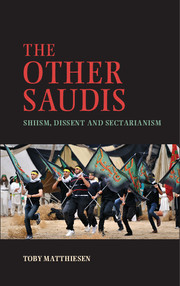Book contents
- Frontmatter
- Dedication
- Contents
- List of Maps and Pictures
- Acknowledgements
- A Note on Conventions
- Glossary
- Abbreviations
- Map
- Introduction
- 1 Politics of Notables
- 2 Oil and Dissent
- 3 Shia Islamism
- 4 A Decade of Confrontation
- 5 No More Revolution
- 6 Marginal Recognition
- 7 A New Intifada
- Conclusion The Politics of Sectarianism
- Bibliography
- Index
- References
6 - Marginal Recognition
Published online by Cambridge University Press: 05 December 2014
- Frontmatter
- Dedication
- Contents
- List of Maps and Pictures
- Acknowledgements
- A Note on Conventions
- Glossary
- Abbreviations
- Map
- Introduction
- 1 Politics of Notables
- 2 Oil and Dissent
- 3 Shia Islamism
- 4 A Decade of Confrontation
- 5 No More Revolution
- 6 Marginal Recognition
- 7 A New Intifada
- Conclusion The Politics of Sectarianism
- Bibliography
- Index
- References
Summary
After 1993 the returning Shia activists were integrated into an established network of supporters in their places of origin and allowed to give a public face to their social and religious institutions. The clerics started to preach in mosques, established informal study circles and became representatives of a marjiʿ. The political cadres became active in the intellectual field and wrote in Saudi newspapers. Saudi media were slowly opening up and together with the Internet led to a lively public sphere. The Saudi state created new institutions as part of a superficial reform process, which was not intended to democratise the country or redistribute power but rather to reconfigure authoritarianism. At the same time, however, these processes also opened up new discursive fields.
In the Eastern Province these changes created new opportunities for the returnees and local activists. The former opposition activists also focussed on establishing civil society organisations. If one sees civil society as an arena where hegemonic power struggles between different social and political forces are played out, one can discern civil society organisations in Saudi Arabia, particularly in Shia areas. This chapter will look at various intermediary organisations such as Shia religious schools, sport clubs, charities, courts, the Majlis al-Shura, municipal councils and human rights organisations, as well as a public sphere of newspapers, TV channels, websites, historical debates, and social media.
- Type
- Chapter
- Information
- The Other SaudisShiism, Dissent and Sectarianism, pp. 166 - 196Publisher: Cambridge University PressPrint publication year: 2014

